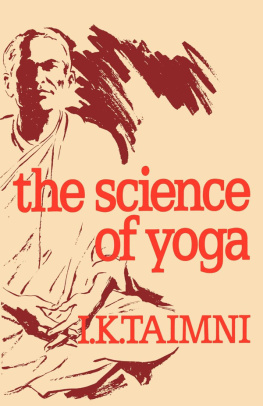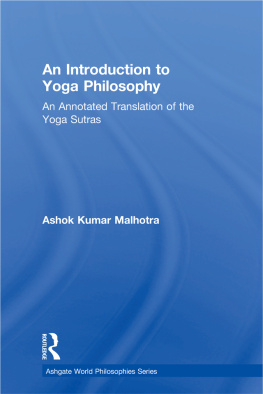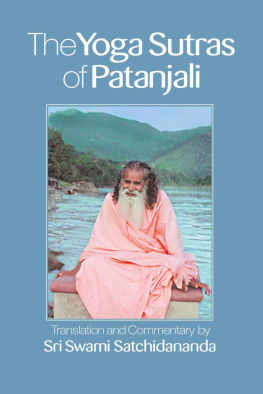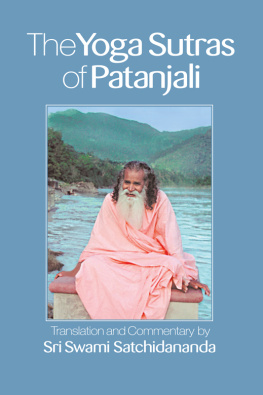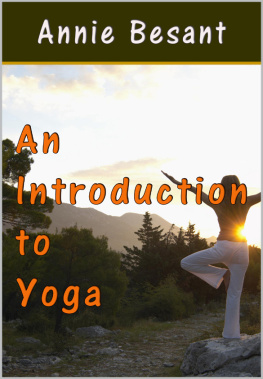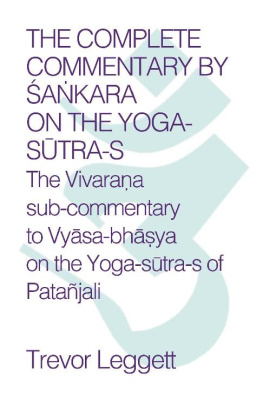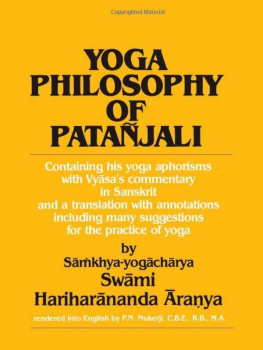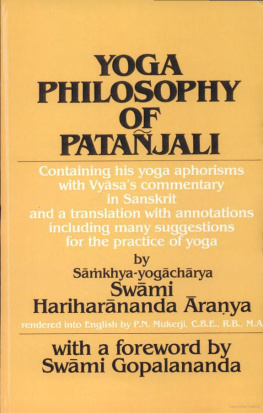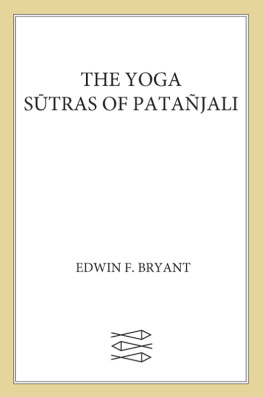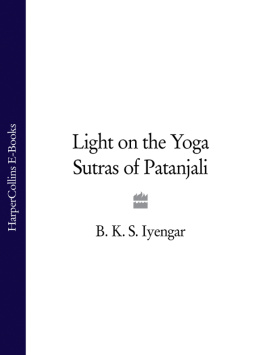the science
of yoga
Cover art by

the science
of yoga
The yoga-sutras of Patanjali in sanskrit
with transliteration in Roman,
translation in English
and commentary.
I.K.TAIMNI
This publication made possible with
the assistance of the Kern Foundation
Quest Books
Theosophical Publishing House
Wheaton, Illinois * Chennai, India
Learn more about I. K. Taimni and his work at www.questbooks.net
Find more books like this at www.questbooks.net
Copyright 1961 by the Theosophical Publishing House
First Quest Edition 1961
Eight printing, 2010
Quest Books
Theosophical Publishing House
PO Box 270
Wheaton, IL 60187-0270
Without limiting the rights under copyright reserved above, no part of this publication may be reproduced, stored in or introduced into a retrieval system, or transmitted, in any form, or by any means (electronic, mechanical, photocopying, recording, or otherwise), without the prior written permission of the publisher of this book.
The scanning, uploading, and distribution of this book via the Internet or via any other means without the permission of the publisher is illegal and punishable by law. Please purchase only authorized electronic editions, and do not participate in or encourage electronic piracy of copyrighted materials.
While the author has made every effort to provide accurate telephone numbers and Internet addresses at the time of publication, neither the publisher nor the author assumes any responsibility for errors or for changes that occur after publication. Further, the publisher does not have any control over and does not assume any responsibility for author or third-party websites or their content.
Library of Congress Cataloging-in-Publication Data
ISBN 978-0-8356-0023-1
ISBN for electronic edition, e-pub format: 978-0-8356-2175-5
PREFACE
A LARGE number of thoughtful people, both in the East and the West, are genuinely interested in the subject of Yoga. This is natural because a man who has begun to question life and its deeper problems wants something more definite and vital for his spiritual needs than a mere promise of heavenly joys or eternal life when he passes out of his brief and feverish life on this planet. Those who have lost faith in the ideals of orthodox religions and yet feel that their life is not a meaningless and passing phenomenon of Nature naturally turn to the philosophy of Yoga for the solution of problems connected with their inner life.
People who take up the study of Yoga with the object of finding a more satisfactory solution of these problems are likely to meet with one serious difficulty. They may find the philosophy interesting, even fascinating, but too much enveloped in mystery and rigmarole to be of much practical value in their life. For there is no subject which is so much wrapped up in mystery and on which one can write whatever one likes without any risk of being proved wrong. To a certain extent this atmosphere of mystery and obscurity which surrounds Yoga is due to the very nature of the subject itself. The philosophy of Yoga deals with some of the greatest mysteries of life and the Universe and so it must inevitably be associated with an atmosphere of profound mystery. But much of the obscurity of Yogic literature is due, not to the intrinsic profundity of the subject, but to the lack of correlation between its teachings and the facts with which an ordinary educated man is expected to be familiar. If the doctrines of Yoga are studied in the light of both ancient and modem thought it is much easier for the student to understand and appreciate them. The discoveries made in the field of Science are especially helpful in enabling the student to understand certain facts of Yogic life, for there is a certain analogous relationship between the laws of higher life and life as it exists on the physical plane, a relationship which is hinted at in the well-known Occult maxim As above, so below.
Some teachers of Yoga have attempted to meet this difficulty by taking out of the philosophy and technique of Yoga those particular practices which are easy to understand and practise, placing these before the general public as Yogic teachings. Many of these practices like sana, Pryma etc. are of a purely physical nature and when divorced from the higher and essential teachings of Yoga reduce their systems to a science of physical culture on a par with other systems of a similar nature. This over-simplification of the problem of Yogic life, though it has done some good and helped some people to live a saner and healthier physical life, has greatly vulgarized the movement for Yogic culture and produced a wrong impression, especially in the West, about the real purpose and technique of Yoga.
What is needed, therefore, for the average student of Yoga is a clear, intelligible presentation of its philosophy and technique which gives a correct and balanced idea of all its aspects in terms of modem thought. For, while it is true that many aspects of Yogic life are beyond the comprehension of those confined within the realms of the intellect, still, the general philosophy and the broader aspects of its technique can be understood by the serious student who is familiar with the main trends of philosophical and religious thought and is prepared to bring to his study an open and eager mind. He can, at least, understand this philosophy sufficiently to be able to decide whether it is worth his while to undertake a deeper study of the subject and later, to enter the path of Yoga as a Sdhaka. For, it is only when he enters the path of practical Yoga and begins to bring about fundamental changes in his nature that he can hope to gain real insight into the problems of Yoga and their solution.
This book is meant to give to the serious student of Yoga a clear idea with regard to the fundamental teachings of Yoga in a language which he can understand. It does not present Yoga from any particular angle or on the basis of any particular school of philosophy. Those who study the book will see for themselves that this Science of sciences is too comprehensive in its nature and too profound in its doctrines to be fitted into the framework of any particular philosophy, ancient or modem. It stands in its own right as a Science based upon the eternal laws of the higher life and does not require the support of any science or philosophical system to uphold its claims. Its truths are based on the experiences and experiments of an unbroken line of mystics, occultists, saints and sages who have realized and borne witness to them throughout the ages. Although an attempt has been made to explain the teachings of Yoga on a rational basis so that the student may be able to grasp them easily nothing is sought to be proved in the ordinary sense. The facts of higher Yoga can neither be proved nor demonstrated. Their appeal is to the intuition and not to the intellect.
There is a vast literature dealing with all aspects and types of Yoga. But the beginner who attempts to dive into this chaotic mass is likely to feel repulsed by the confusion and exaggerated statements which he is likely to find everywhere. Round a small nucleus of fundamental and genuine teachings of

